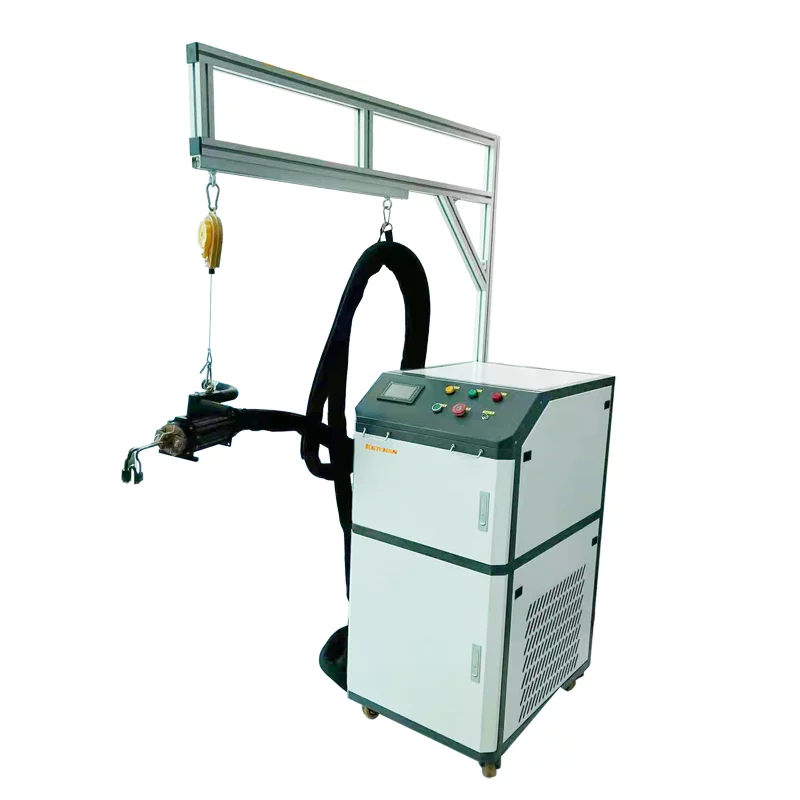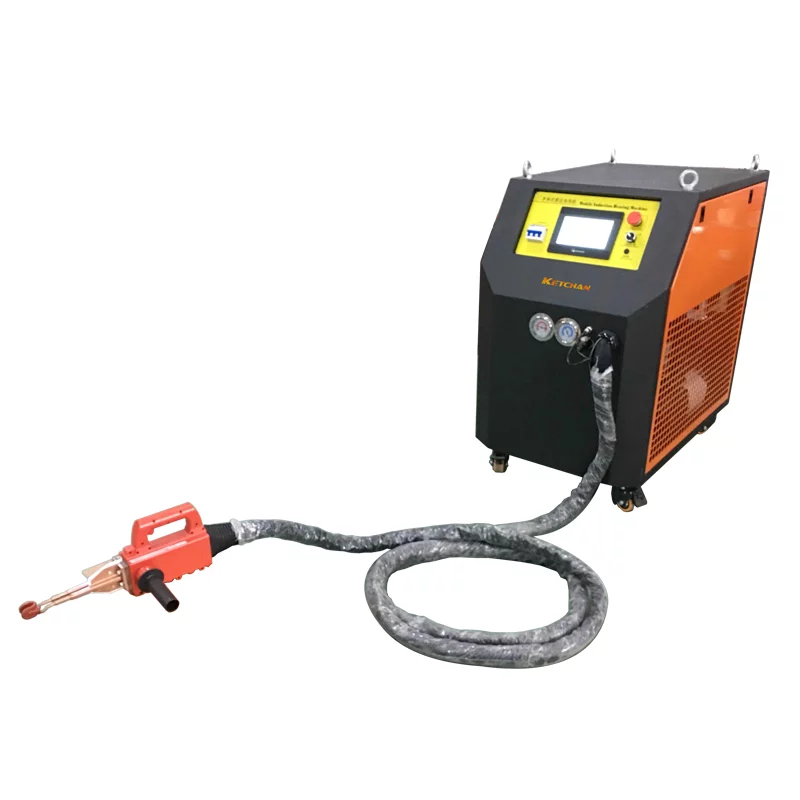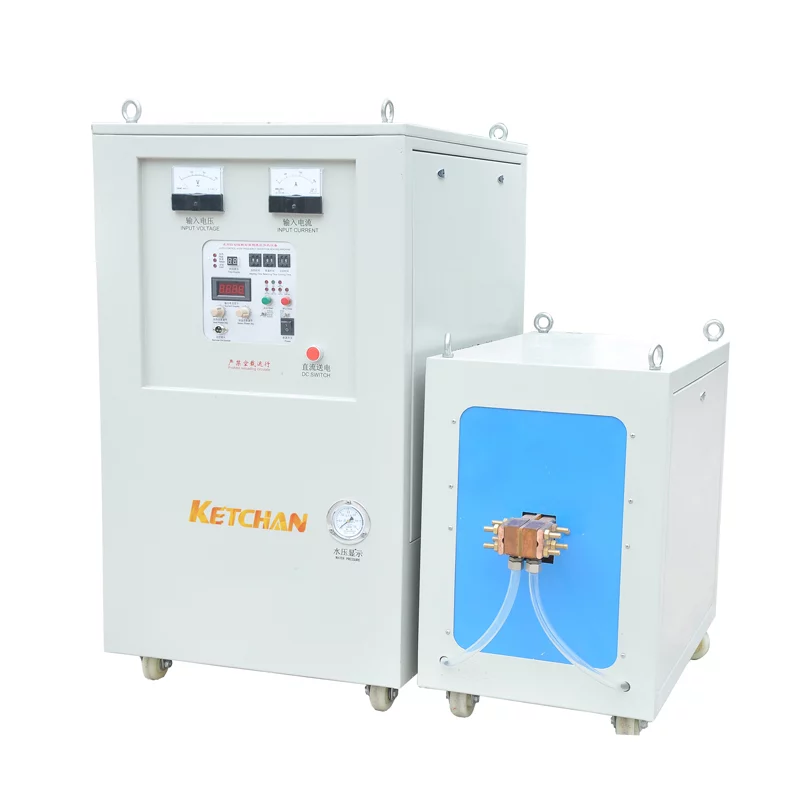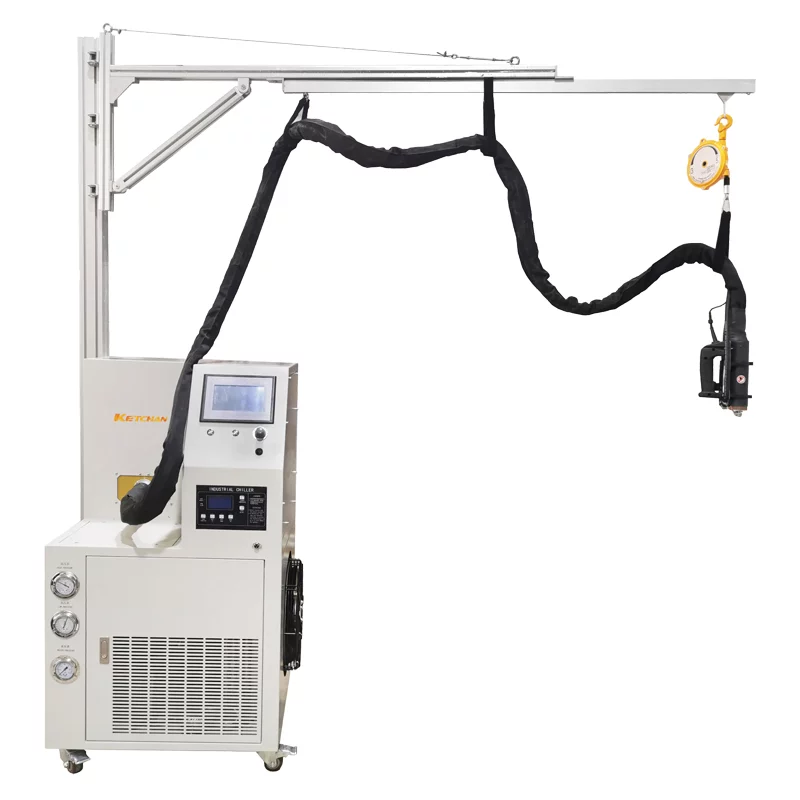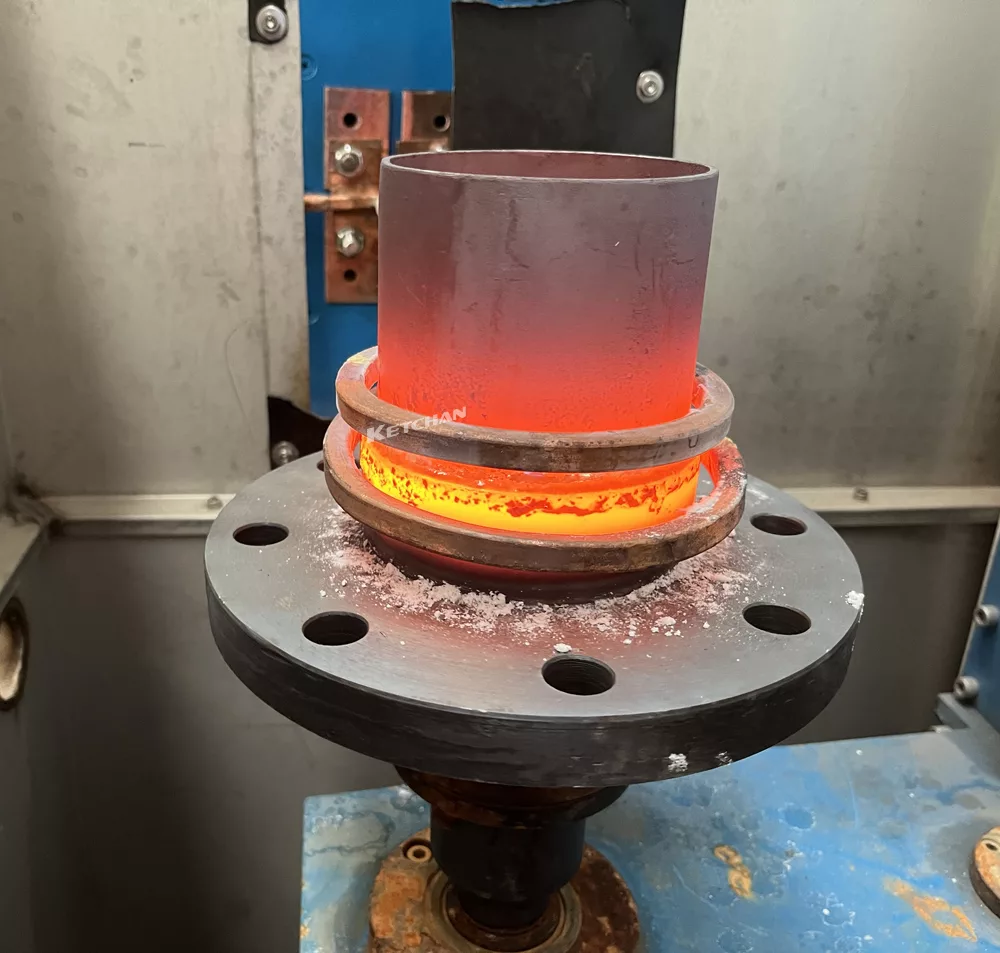
Induction welding brazing is a form of welding that uses electromagnetic induction to heat the workpiece. The welding apparatus contains an induction coil that is energized with a radio-frequency electric current. This generates a high-frequency electromagnetic field that acts on either an electrically conductive or a ferromagnetic workpiece. The main heating effect is due to resistive heating or hysteresis, depending on the material of the workpiece. Induction welding is used for long production runs and is a highly automated process, usually used for welding the seams of pipes. It can be a very fast process, as a lot of power can be transferred to a localized area, so the faying surfaces melt very quickly and can be pressed together to form a continuous rolling weld.
How does induction welding brazing work?
Induction welding brazing works by using induction heating from radio frequency alternating current to magnetically excite an implant placed at the joint interface of the two parts being welded. This implant, or gasket, is normally a composite of the polymer to be welded with either metal fibers or ferromagnetic particles. The heat generated melts and fuses the implant with the surrounding material. It is a reliable and rapid technique that can produce structural, hermetic, or high-pressure welds.
How does induction welding brazing compare to other welding methods?
Induction welding brazing has some advantages and disadvantages compared to other welding methods.
Some of the advantages are:
- It is a fast and reliable technique that can produce structural, hermetic, or high-pressure welds.
- It is less dependent on the properties of the materials being welded and can weld almost all thermoplastics, crystalline and amorphous, and high performance and difficult-to-weld resins.
- It does not require direct contact between the heat source and the workpiece, which reduces contamination and oxidation.
- It can produce high quality, stress-free welds in highly filled thermoplastics.
Some of the disadvantages are:
- It requires an implant or a gasket that is compatible with the polymer to be welded and the induction coil.
- It may not be suitable for welding metals with low electrical conductivity or high magnetic permeability.
- It may generate electromagnetic interference that can affect nearby electronic devices.
- It may require shielding or cooling to protect the surrounding areas from heat damage.
Other welding methods, such as arc welding, laser welding, oxyfuel welding, and solid reactant welding, have different characteristics and applications. For example, arc welding is the most popular type of fusion welding that uses an electric arc to join metals. It can be performed underwater and has a high penetration depth. However, it may also produce sparks, spatter, fumes, and noise that can be hazardous. Laser welding uses light radiation to produce heat and join metals. It has high precision and speed and can weld thin or dissimilar materials. However, it may also require high power consumption and complex equipment. Oxyfuel welding uses a flame fueled by oxygen and flammable gas to join metals. It has a low cost and can weld thick or cast materials. However, it may also produce slag, porosity, distortion, and oxidation. Solid reactant welding uses chemical reactions with certain materials to join them. It has a low heat input and can weld dissimilar or non-metallic materials. However, it may also require special compounds and careful handling.
How to select the right induction welding brazing machine?
To select an induction welding brazing machine, you need to consider several factors, such as:
- The type of material being welded. Induction welding can weld almost all thermoplastics, crystalline and amorphous, and high-performance and difficult-to-weld resins1. However, it may not be suitable for welding metals with low electrical conductivity or high magnetic permeability.
- The thickness of the material. Induction welding can produce high-quality welds in highly filled thermoplastics. However, the depth of heating is inversely proportional to the square root of the frequency, so thicker materials may require lower frequencies and longer heating times.
- The required weld metallurgy. Induction welding can produce structural, hermetic, or high-pressure welds1. However, it may also generate electromagnetic interference that can affect nearby electronic devices. Therefore, shielding or cooling may be required to protect the surrounding areas from heat damage.
- The welding position. Induction welding is suitable for edge welding of tubes and pipes that move at high speed. However, it may not be ideal for welding complex or irregular shapes that require flexible heating tools.
- The available power supply. Induction welding uses radio frequency alternating current to generate heat. Therefore, you need to choose a power generator that matches the voltage and frequency requirements of your induction coil and workpiece.
- The implant or gasket. Induction welding requires an implant or a gasket that is compatible with the polymer to be welded and the induction coil. The implant or gasket is normally a composite of the polymer to be welded with either metal fibers or ferromagnetic particles. You need to choose an implant or gasket that has sufficient electrical conductivity and magnetic permeability to absorb the electromagnetic energy from the induction coil and transfer it to the surrounding material by thermal conduction.
You can find more information on how to select an induction welding machine from our induction heating expert!
You can find more information on how to select an induction welding machine from our induction heating experts!
KETHCAN Induction Heating Technology

Relate Products
-
Induction Brazing System
HVAC Induction Brazing Machine
-
Induction Brazing System
Handheld Induction Brazing Machine
-
Induction Brazing System
Portable Induction Soldering Machine
-
HF Induction Heating System
High Frequency Welding Machine
-
HF Induction Heating System
Industrial Induction Heating Machine
-
Portable Induction Heaters
Portable Induction Welding Machine

